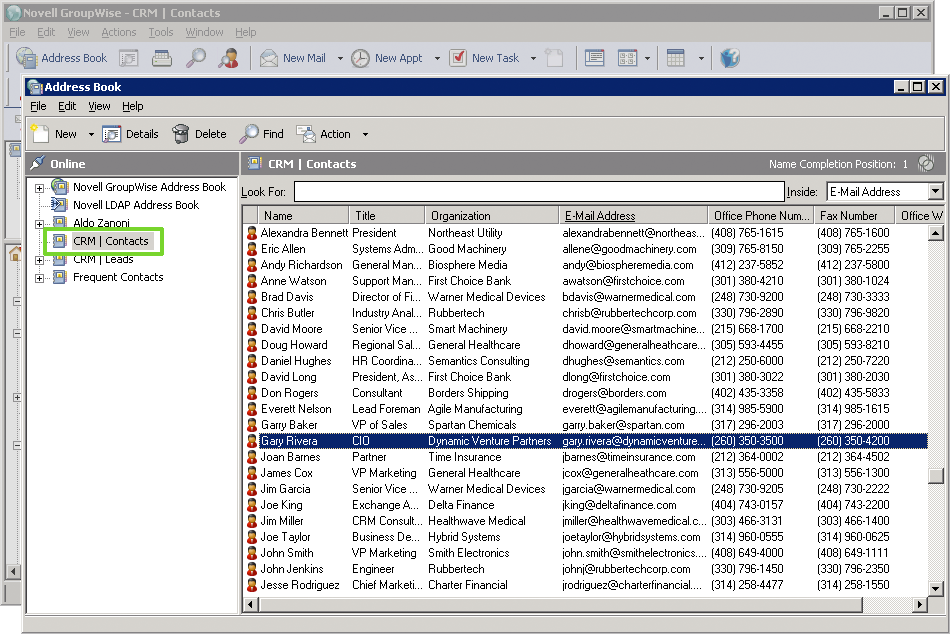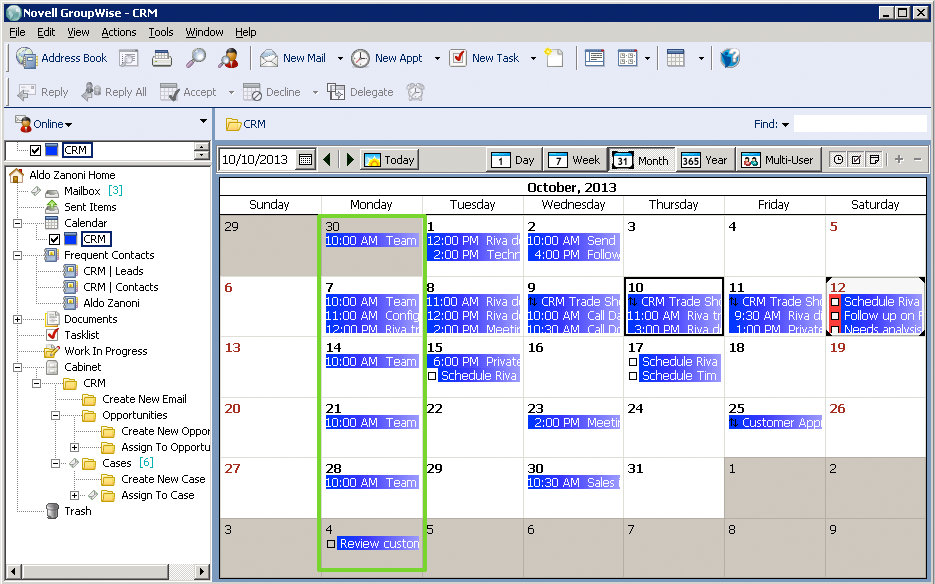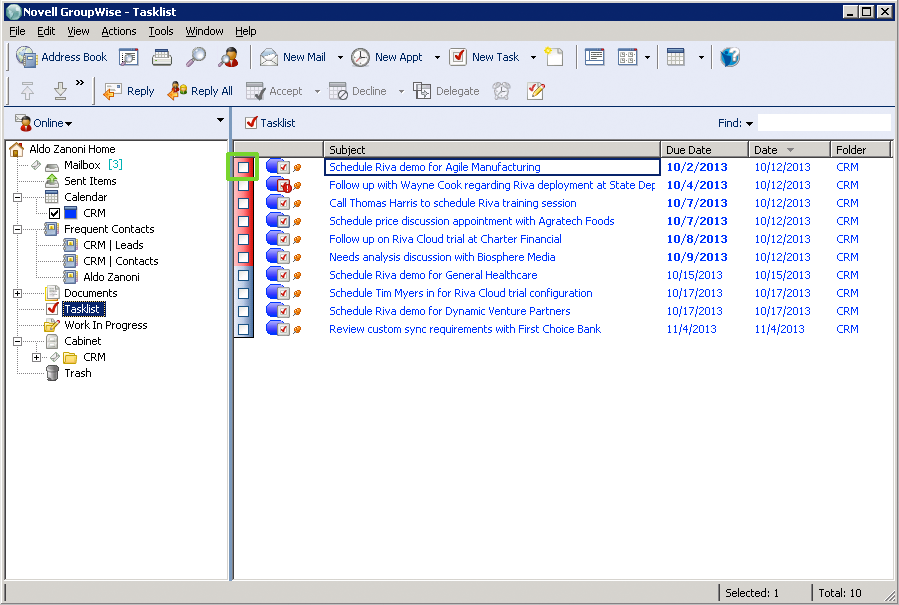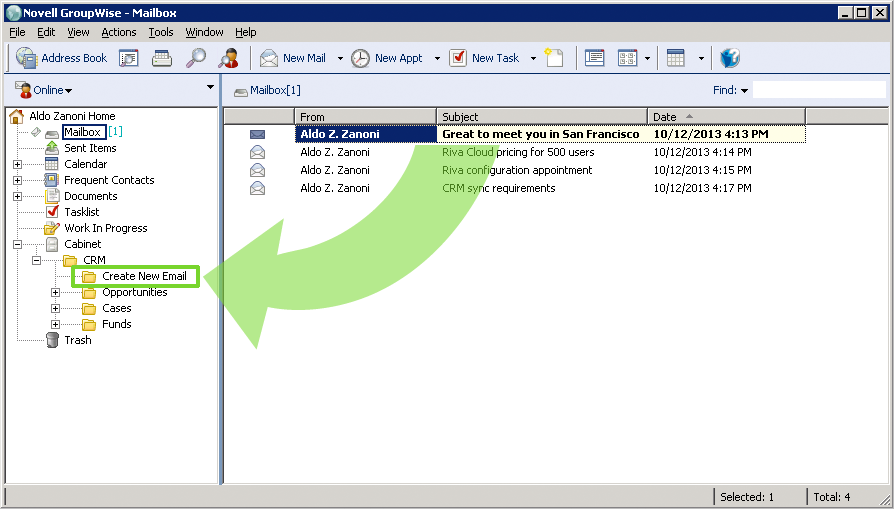|
Article ID: 437
Last updated: 22 Feb, 2021
We have grand-fathered our support for syncing GroupWise.
To understand Riva's basic sync features, read the summary descriptions for each type of data that Riva syncs and watch some videos. Contents:
How Does Riva Sync Your Contacts and Leads?
Sync CRM Contacts to the GroupWise Address Book Syncing contact and lead dataFirst Time Sync: Once a user has been added to a sync policy and Riva runs a first time sync against that user, Riva syncs a filtered list of contacts and leads from the CRM and creates those as contact records in the GroupWise Address Book:
Normal Data Sync: Riva can support bidirectional or unidirectional data syncing between the CRM and GroupWise. When bidirectional syncing is enabled, Riva syncs contacts, accounts and leads as follows:
How Does Riva Sync Your Calendar Events?
Sync CRM Calendar Items to the GroupWise Calendar First Time Sync: Once a user has been added to a sync policy and Riva runs a first time sync against that user, Riva syncs calendar items from the CRM and creates those as calendar items in a child calendar in GroupWise that matches the category name specified in the sync policy. Normal Data Sync: Riva supports bidirectional and unidirectional data syncing between the CRM and GroupWise. When bidirectional syncing is enabled, Riva syncs the calendar as follows:
Note: Riva does not sync marking CRM calendar items as "completed" to Exchange. How Does Riva Sync Your Tasks?
Sync CRM Tasks to the GroupWise Tasklist First Time Sync: Once a user has been added to a sync policy and Riva runs a first time sync against that user, Riva will sync task items from the CRM and create those as tasks items in the user's Tasklist in GroupWise. Those task items will appear in the user's GroupWise Tasklist and be colour-coded according to the Calendar page of the sync policy. Normal Data Sync: Riva supports bidirectional and unidirectional data syncing between the CRM and GroupWise. When bidirectional syncing is enabled, Riva syncs tasks as follows:
How Does Riva Sync Your Email to the CRM?Riva can sync email in various ways. From the CRM to the email system: From the email system to the CRM:
Note: Riva does not sync emails created in the CRM into GroupWise. Riva creates summary emails to represent CRM module data (like opportunities)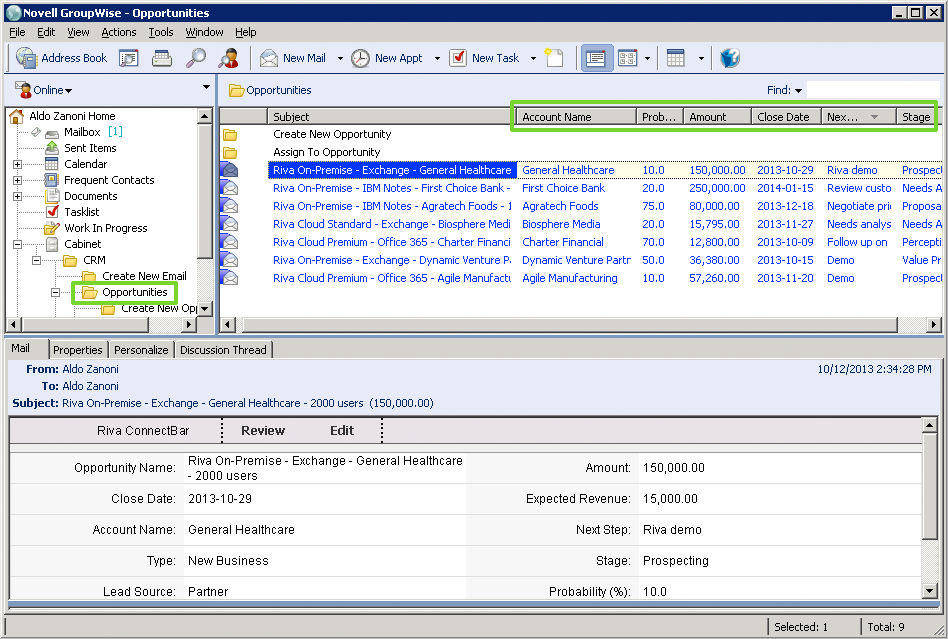
Sync CRM opportunities, cases, and custom objects between the CRM and GroupWise Normal Data Sync: Riva creates summary emails in the Exchange mailbox in the module folders of the drop folder structure, for example the Opportunities folder. Those emails contain summary information about each active module item (for example, an opportunity). Each email also includes a button or website link to open the module item in the CRM in either Edit or View mode. Create and track email against CRM users, contacts, or leads
Track emails to the CRM contacts using drag and link to the "Create New Email" folder First Time Sync: During the first sync, Riva creates and manages a set of folders in each user’s mailbox. This folder contains “smart” folders that Riva uses to allow users to interact with Riva. These folders are used as “drop” folders or “display” folders for the different CRM object types. By default, the default “drop” folders include “- Create New Email, - Create New Opportunity, - Create New Case and – AssignTo folders for each of the objects that have been enabled on your sync policy. The default “display” folders display relevant opportunities, cases, quotes, projects and custom objects based on the sync policy that applies to each user. Not all users will see all folders. And, keep in mind that the folders might have different names based on how Riva was configured for your company’s implementation. Normal Data Sync: By default, Riva archives emails and matches the email recipients to the CRM user first, then to CRM contacts, and then to CRM leads (if enabled in the sync policy). Riva can be configured to sync emails and create module items in the CRM, typically new opportunities, cases, projects, or quotes. Riva also supports custom objects for some CRMs. For each email placed in a "drop folder", Riva archives it to the CRM as follows:
Convert an email into a CRM opportunity, case, project, or custom object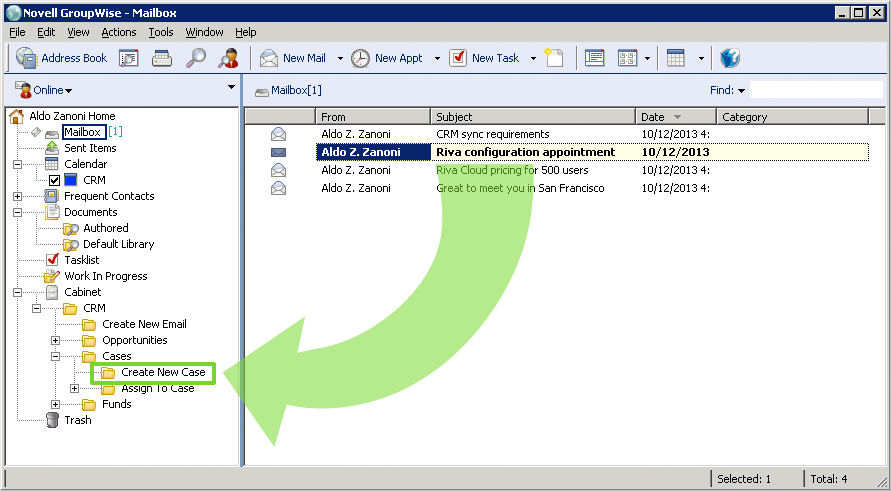
Use SmartConvert to convert an email into a new CRM case First Time Sync: During the first sync, Riva builds, in the user's mailbox, a new folder structure that contains "drop folders". Drop folders (for example, "- Create New Opportunity") are added for each module that is enabled in the Other tab of the sync policy. Normal Data Sync: When a user places an email in a "- Create New [module]" folder, Riva processes that email as follows:
Create and track email against CRM opportunities, cases, projects, and custom objects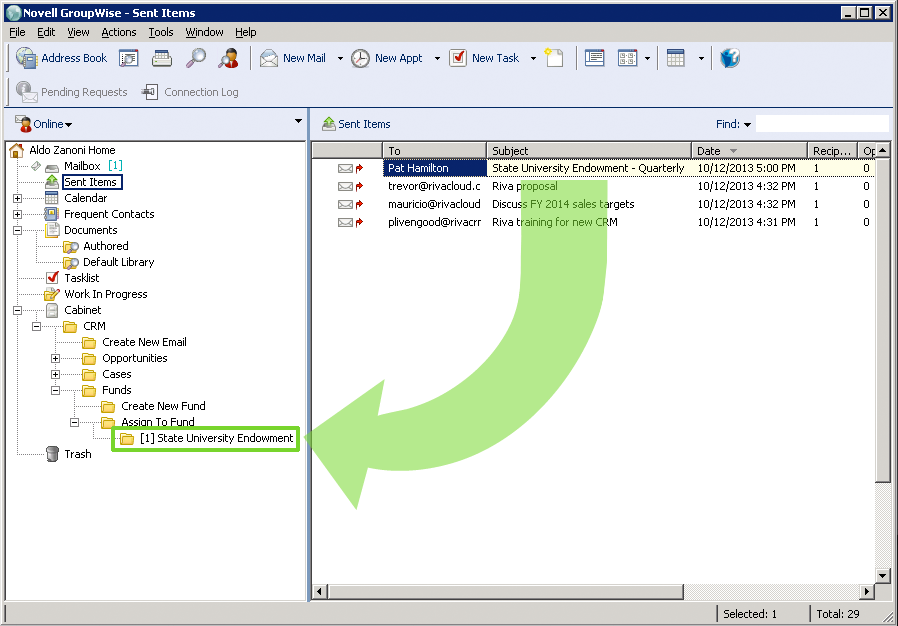
Use AssignTo to create and track emails against existing opportunities, cases, projects and custom modules First Time Sync: During the first sync, Riva adds an \Assign To\ folder under the parent module folder for each module enabled in the Other tab of the sync policy. Riva adds a drop folder for each active module item that is either visible to or owned by the user. The folder name is based on the module item:
Normal Data Sync: When a user places an email in an AssignTo drop folder, Riva processes that email as follows:
How Does Riva Work with Tablets and Smartphones?See our Knowledge Base articles about syncing CRM data with mobile devices:
Other Training VideosWatch our YouTube videos where you can see:
This article was:
Helpful |
Not helpful
Report an issue
Article ID: 437
Last updated: 22 Feb, 2021
Revision: 11
Views: 7654
Comments: 0
Also listed in
|
